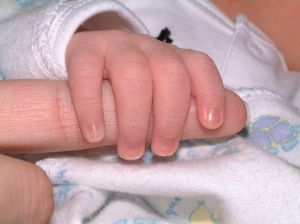Are your eyes red, watery, irritated, and sensitive to light? It may be more than simply eye strain. It could be dry eyes. Dry eyes affects up to thirty percent of women over the age of fifty and is often associated with hormonal changes that occur around the time of menopause, It’s also seen more commonly in people with autoimmune diseases – especially Sjogren’s disease. If you think you have this condition, an opthamologist may perform a test called the Schirmer test for dry eyes. Here’s what this test entails.
What is a Schirmer’s Test for Dry Eyes?
A Schirmer’s test for dry eyes involves placing a small strip of special paper into the inner aspect of the lower eyelid. The eye is then closed for five minutes which allows moisture to collect on the paper. The paper is then removed from the eyelid and the amount of moisture is measured. The quantity of moisture on the paper can then compared with normal values. In some cases, an opthamologist will use a numbing eyedrop before the test since some people find it uncomfortable hold the paper in their eye.
How Accurate is a Schirmer’s Test for Dry Eyes?
The Schirmer’s test is still widely used, but it may not be the best test for determining whether a person has dry eyes. Another commonly used test that may be more accurate is corneal staining using a fluorescein dye. Once the dye is placed into the eye, the opthamologist times how long it takes for the dye to drain into the nose through the lacrimal duct. If there aren’t enough tears being produced, it will take longer for this process to occur.
Another test for dry eyes is called the tear break-up time test which measures how rapidly the tear film in the eye breaks up. In people with dry eyes, the tear film breaks up faster than in people who have normal tear production. Another test involves measuring the amount of a molecule called lactoferrin in the eye. Dry eyes usually produce less of this protein than normal eyes.
After a Schirmer’s Test for Dry Eyes: What Next?
Once you know you have a dry eye either from the Schirmer’s test or from another dry eye test, it’s important to find out why. Dry eyes are commonly seen with aging and are more frequently seen in women as they approach menopause. Some medications reduce tear production – as can a deficiency in vitamin A. Autoimmune diseases such as Sjogren’s syndrome, rheumatoid arthritis, and sarcoidosis can do it too – as well as other systemic conditions such as thyroid disease or diabetes. It’s also more common in people who wear contact lenses, work on a computer, and who have had laser eye surgery.
It’s important to look for the cause of dry eyes. Once this is known, your doctor can discuss the various treatment options with you.
References:
Merck Manual. 18th Edition.



